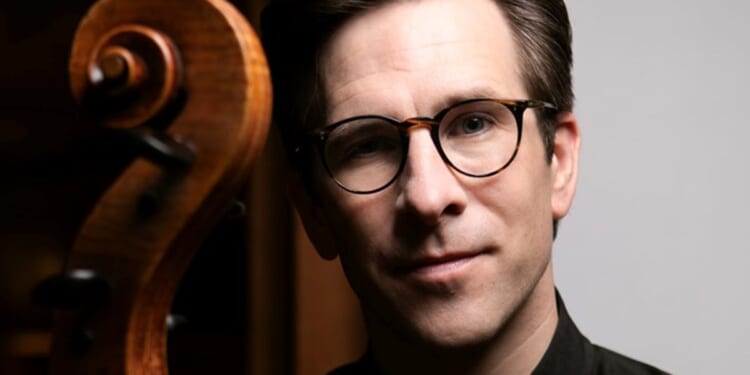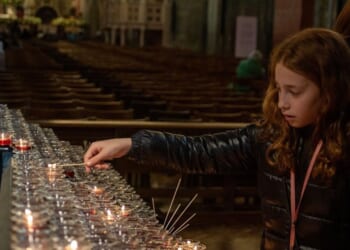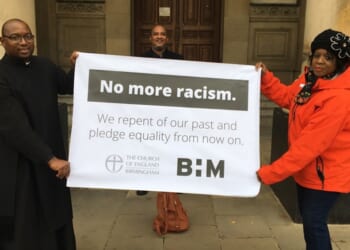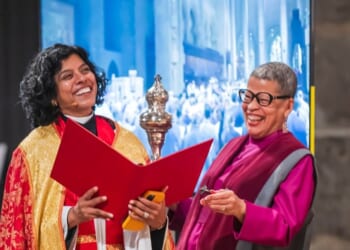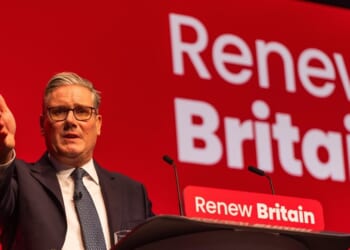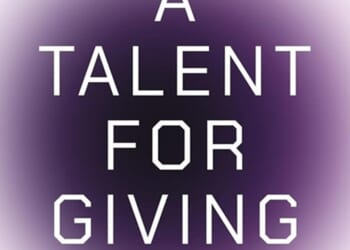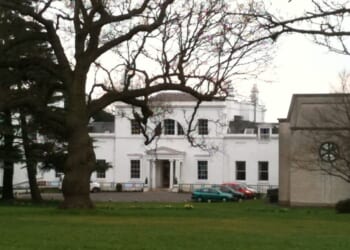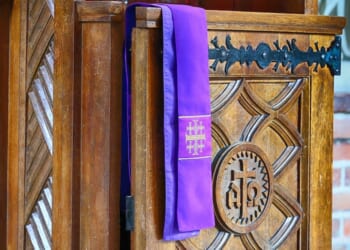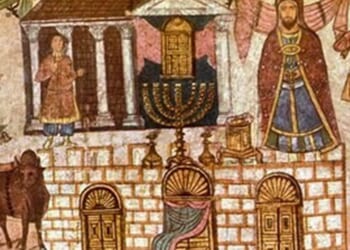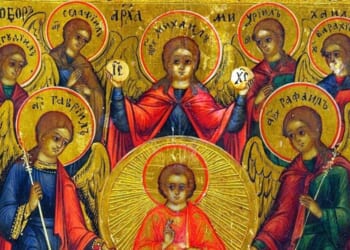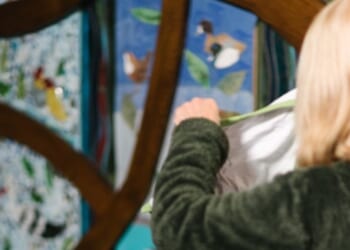THE cellist Guy Johnston has just begun a short tour performing Sir John Tavener’s The Protecting Veil, with the Britten Sinfonia. A spine-tingling performance at the Hatfield Music Festival (of which Mr Johnston is the artistic director) on Sunday will be followed by a second, next week, at the Cambridge Music Festival. The venture culminates in two special concerts, which will be filmed and recorded, at St Sophia’s Greek Orthodox Cathedral, Moscow Road, in London. An album will be released by Signum next summer.
The plan for the recording came about after a highly acclaimed tour of the piece with the Britten Sinfonia last year, when the late composer (who died in 2013) would have celebrated his 80th birthday. “Some years ago I went to the Greek Orthodox cathedral in London for inspiration, and got talking to a verger, who mentioned that Tavener used to go there,” Mr Johnston says. “It crossed my mind what a special experience it could be to hear The Protecting Veil in the very place where the composer used to worship.”
All the performances this month will have taken place in spiritual settings, “which is where the work belongs”, he says. “The ambience and acoustics will help to inspire the music-making with the added reverberation around the religious spaces.”
But the chance to record it in the Greek Orthodox cathedral presents a unique opportunity. St Sophia’s is a hidden gem: “The front of the building is quite modest, only hinting at what is to come as you walk inside. It is a majestic setting, full of ornate mosaics, iconostases, and elaborate decorations. The dome ceiling is a particular highlight, and the acoustic will be ideal for this spiritual work.
“The cathedral doesn’t usually open its doors for concerts, as it’s a holy place of worship. But they could see the significance of this particular work, and that it connects with the very traditions of the Greek Orthodox faith. It is a work about peace and protection, and therefore a work for our times as much as it was for the past.”
Tavener’s religious faith was central to his creativity and his output; Mr Johnston played three of the composer’s works at Holy Communion in the Hatfield House Chapel on the morning of Sunday’s concert. Tavener was received into the Orthodox Church in 1977, and Orthodox theology and liturgical traditions became a significant influence on his work. But it was The Protecting Veil, composed halfway through his career, that first brought him widespread recognition. (His 1993 composition, Song for Athene, catapulted him to global celebrity after it was sung at the funeral of Diana, Princess of Wales.)
The composer began work on the piece in 1988, in response to a request from the cellist Steven Isserlis for a ten-minute piece for solo cello. Mr Isserlis ended up with rather more than he had bargained for: a 45-minute piece in eight sections, with orchestral accompaniment. The piece had its première at the 1989 Proms season, and was immediately hailed as a classic, becoming one of only a handful of classical pieces to be nominated for a Mercury Prize.
Its inspiration comes from the Orthodox Feast of the Protecting Veil of the Mother of God, which commemorates the moment, in the tenth century, when Mary the Mother of God is said to have appeared before worshippers at St Mary of Blachernae, in Constantinople, during an all-night vigil. The apparition inspired the besieged Christian Greeks to withstand an onslaught from Saracen marauders.
Tavener wrote: “In my piece entitled The Protecting Veil for cello and strings, I have tried to capture some of the almost cosmic power of the Mother of God. The cello represents The Mother of God and never stops singing throughout. One can think of the strings as a gigantic extension of her unending song.”
The piece was “an attempt to make a lyrical ikon in sounds, rather than in wood, and using the music of the cellist to paint rather than a brush”, Tavener continued. “The music is highly stylised, geometrically formed, and meditative in character.”
The piece is regarded as one of Tavener’s most beautiful and distinctive creations. And it is close to Mr Johnston’s heart: he grew up listening to Isserlis’s landmark recording. He performed the piece live on Radio 3 in King’s College Chapel in a memorial concert for Tavener, and remembers the composer’s young son wriggling around on the floor in front of him as he played.
The work is full of drama, ecstatic and meditative by turns. The eight sections depict The Protecting Veil, The Nativity of the Mother of God, The Annunciation, The Incarnation, The Lament of The Mother of God at the Cross, The Resurrection, The Dormition, and finally a return of The Protecting Veil. Throughout the piece there is a running sighing theme representing Mary’s tears.
The sound world created by the composer is “unlike any other work I can think of”, Mr Johnston says. “At one point, the cello is left lamenting alone for almost five minutes in the darkest register of the instrument. There are some sublime moments, with interjections of warlike eruptions from the double basses and string orchestra along the way, but, somehow, by the end, one is transported to a distant mystical realm.”
And the piece is “extremely challenging” for the soloist. “The cellist is playing in the stratosphere for much of the time. Much of it is up high and you need a lot of stamina along the way.” Performing it requires some unusual techniques, “including symbols denoting microtones that characterise the breaks in the voice of Byzantine chant, plus challenging double stops and other virtuosic passages that sound almost improvised”.
In this instance, he says, “We are performing without conductor, which makes the tempo and scene changes quite a challenge, too, but it feels more like chamber music with just the string orchestra and soloist. I think this acoustic and special space will inspire a whole new world for the piece.”
MR JOHNSTON also has a personal connection: he met the composer on a number of occasions. “I first encountered John Tavener when I was a young chorister at King’s College, Cambridge,” he says. “We were singing his choral work The Lamb, and I vividly remember his presence, which struck me even then, as a young nine- or ten-year-old. He was extremely tall, with long hair, dressed in a white suit, and had a sort of mystical aura around him.”
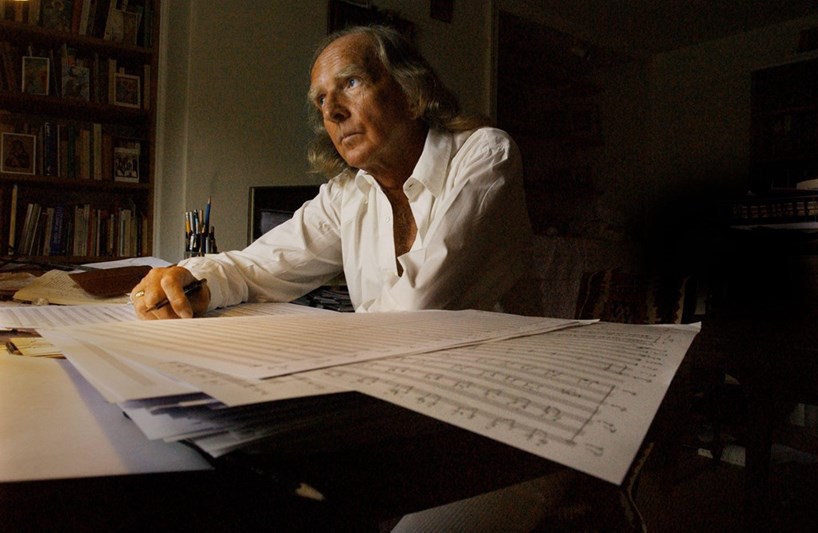 AlamySir John Tavener at home in Dorset in 2004
AlamySir John Tavener at home in Dorset in 2004
Some years later, he was performing two more of Tavener’s works: Popule Meus, for solo cello and orchestra, and Svyati, for cello and choir, also in King’s College Chapel, and he found out that Tavener was planning to attend the concert. “I decided to reach out to him to ask about the pieces before we performed them in his presence,” he says.
Tavener’s wife, Maryanna, answered the call. “I remember hearing her take the phone to John, ascending many steps into what sounded like an attic in my mind, and, knowing John’s heavenly music, I wondered if we had actually arrived above the clouds.”
Tavener gave him some valuable insight into the works, he says, but he cannot recall the details of their discussion. “Today, I don’t remember much specifically about the conversation other than being slightly star-struck. Knowing that he was in the chapel as we performed the concert made the whole occasion extra-special.”
At the end of the performance, Tavener took a bow to “an almighty crescendo of applause”, he says. They chatted later at a reception after the concert. “We talked away about various things. I most remember him telling me, ‘I think I’m just starting to come around to Beethoven.’”
In preparation for the performances this month, Mr Johnston has spent time working with Mr Isserlis, his mentor and friend, “to absorb his wisdom about the work which was written for him”, he says. He has also made a trip to Tavener’s home, in Dorset, to spend time with his widow, to look at the original score for inspiration, and to play in their private chapel.
He is looking forward to the concerts in St Sophia’s. “I can’t help feeling transported by Tavener’s inspired vision for the piece,” he says. “There’s no question [that] a combination of this space, the work, and the audience present will help to inspire the Britten Sinfonia and me, as together we go on a poignant journey.”
Tickets for the Cambridge Music Festival and the concerts at St Sophia’s are available from: brittensinfonia.com/events

